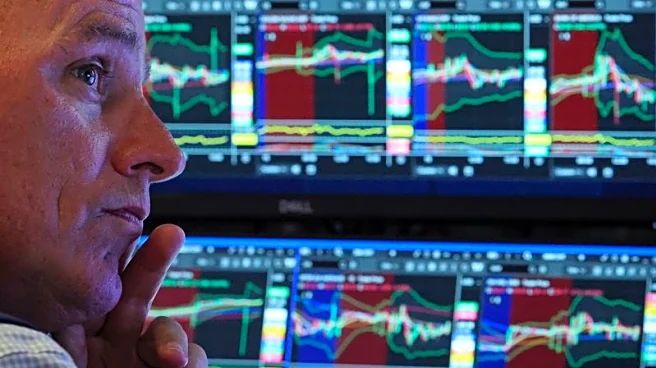What is the story about?
What's Happening?
Hedge funds have significantly increased their investment in financial stocks following the Federal Reserve's first rate cut of 2025. According to Goldman Sachs' prime brokerage data, financials were the second-most bought global sector, behind tech stocks, with steady inflows from professional traders throughout the week. The buying was driven by new long positions, rather than short covering, and ranked in the 98th percentile for the past five years. Nearly all financial subsectors attracted buying interest, particularly banks, insurers, and consumer finance firms. The rate cut has led to a steeper yield curve, improving banks' lending profitability, and lower borrowing costs are expected to boost loan demand and economic activity.
Why It's Important?
The increased investment in financial stocks by hedge funds indicates confidence in the sector's ability to benefit from the Fed's rate cut. A steeper yield curve enhances banks' profitability by widening the gap between short-term borrowing costs and long-term lending rates. Additionally, lower interest rates can stimulate economic activity, benefiting financial companies involved in capital markets through increased deal-making and credit growth. This trend suggests potential gains for financial institutions and investors, as well as broader economic implications if loan demand and economic activity increase.
What's Next?
The Fed has signaled that two more rate cuts may occur before the end of the year, which could further influence hedge fund strategies and financial stock investments. Financial institutions and investors will be closely monitoring the Fed's actions and economic indicators to assess the impact on lending profitability and market activity. The potential for increased deal-making and credit growth could lead to further gains in financial stocks.
Beyond the Headlines
The hedge funds' strategic move into financial stocks highlights the sector's resilience and adaptability in response to monetary policy changes. This investment trend underscores the importance of understanding the interplay between interest rates, yield curves, and financial market dynamics. The focus on new long positions rather than short covering suggests a long-term confidence in the sector's growth potential.
AI Generated Content
Do you find this article useful?














